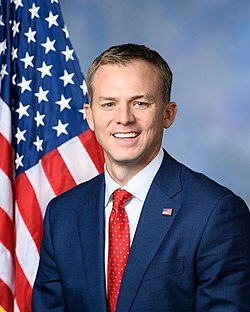
Since Utah became a U.S. state in 1896, it has sent congressional delegations to the United States Senate and United States House of Representatives. Each state elects two senators to serve for six years. Before the Seventeenth Amendment in 1913, senators were elected by the Utah State Legislature. Members of the House of Representatives are elected to two-year terms, one from each of Utah's four congressional districts. Before becoming a state, the Territory of Utah elected a non-voting delegate at-large to Congress from 1850 to 1896.
Contents
- U.S. Senate
- U.S. House of Representatives
- Current representatives
- Delegates from Utah Territory
- Representatives from the State of Utah
- See also
- Notes
- References
- External links
58 people have served either the Territory or State of Utah: 14 in the Senate, 42 in the House, and 2 in both houses. The average term for senators has been 15.3 years and the average term for representatives has been 6.7 years. The longest-serving senator was Orrin Hatch, from 1977 to 2019. The longest-serving representative is James V. Hansen, in office for 22 years from 1981 to 2003. No Utah women have served in the Senate, but five women - Reva Beck Bosone, Karen Shepherd, Enid Greene, Mia Love, and Celeste Maloy - have been Representatives.
The current dean of the Utah delegation is Senator Mike Lee, having served in Congress since 2011.






















